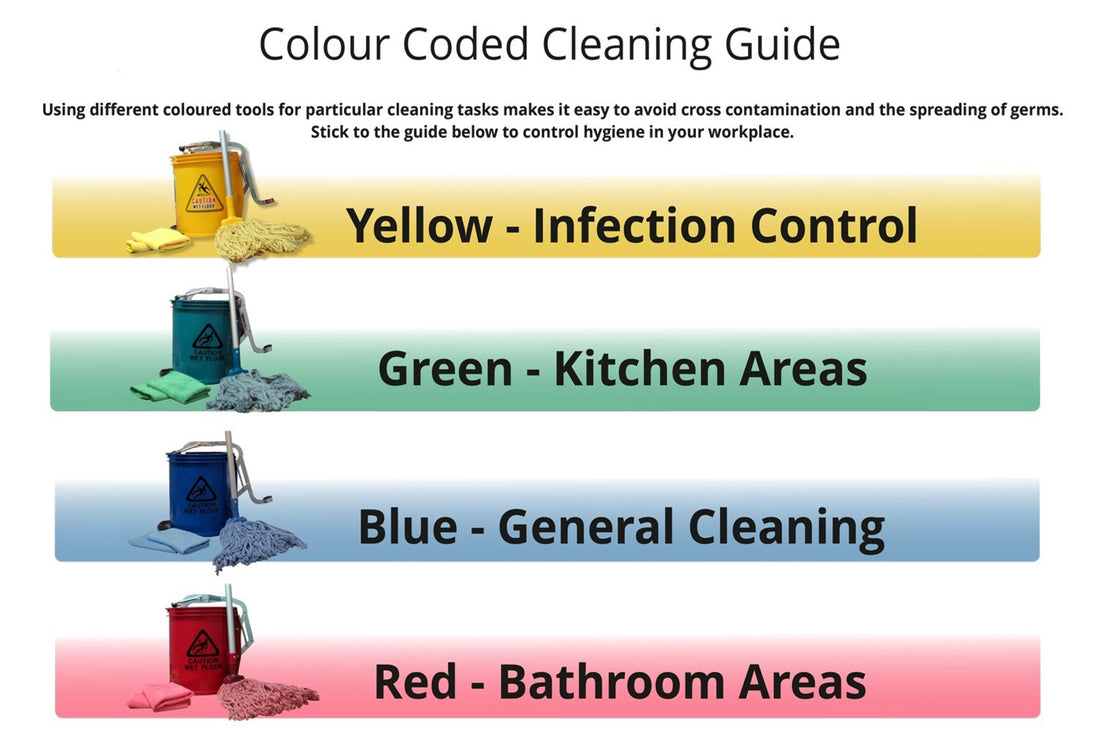
The Importance of Colour Coded Cleaning Tools in Workplace Hygiene
Maintaining a clean and hygienic workplace goes beyond just routine sweeping and mopping. One of the most effective yet often overlooked hygiene practices is using colour coded cleaning tools. This simple system significantly reduces the risk of cross-contamination, ensuring each area of a facility is cleaned with dedicated equipment. Whether you manage a healthcare centre, restaurant, office, or educational institution, implementing this guide can elevate your hygiene protocols.
What Is Colour Coded Cleaning and Why It Matters?
Colour coded cleaning refers to the use of cleaning tools (like mops, cloths, and buckets) that are designated for specific areas using distinct colours. The goal is to prevent germs and bacteria from spreading between high-risk and low-risk areas. For example, you wouldn’t want the same cloth used in a bathroom to be used in the kitchen and this is where colour coding provides a foolproof visual cue.
The main benefits include:
- Enhanced hygiene and reduction of infection risks
- Improved safety standards across sectors
- Easy training for cleaning staff, especially in high-turnover workplaces
- Compliance with workplace health and safety protocols
Colour Code Breakdown - Where to Use Each Colour
The guide defines four main colour categories, each assigned to a specific area:
-
Yellow – Infection Control Areas:
Tools marked yellow should be used in places that require the highest level of cleanliness, such as hospitals, clinics, or isolation zones. This helps control the spread of bacteria and viruses. -
Green – Kitchen and Food Prep Areas:
Green tools are strictly for kitchen counters, food prep surfaces, and related areas. This prevents contamination from other zones, especially bathrooms or waste areas. -
Blue – General Cleaning Areas:
Blue is designated for low-risk general cleaning tasks. This includes hallways, offices, classrooms, and public waiting areas. It’s ideal for everyday maintenance cleaning. -
Red – Bathroom and Sanitary Areas:
Red tools are used in restrooms and washroom areas, including toilets and urinals. These tools must never be used in any other part of a facility due to the high contamination risk.
How to Implement Colour Coding in Your Facility
Setting up a colour coded system doesn't require expensive tools, just a bit of planning and consistency. Start by:
- Purchasing tools in the designated colours for your facility needs.
- Training staff on which colours go where, and why it matters.
- Labelling storage areas clearly so tools are returned correctly.
- Regularly monitoring compliance and replacing worn-out tools.
You can also place printed guides in janitorial closets to serve as reminders for cleaning teams.
Final Thoughts on Cleaning Safety and Efficiency
By adopting a colour coded cleaning system, your business or facility can drastically reduce health hazards and promote a more professional, hygienic environment. It's a small change with a big impact one that your staff and customers will appreciate. Make hygiene visible, manageable, and effective with this proven system.


 Call Us
Call Us